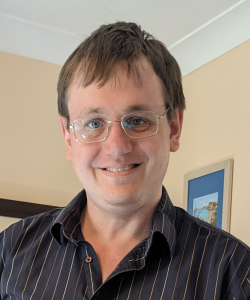Tuesday 18th November 2025 from 19:00 for 19:30
Abingdon United Football Club (Northcourt Rd, OX14 1PL, Abingdon)
Note: This talk will be preceded by a short AGM.
Magnetic Resonance Imaging (MRI) is the most successful story of applied superconductivity. Innovation continues to drive MRI. Every scanner has at its heart a magnet; the UK played a prominent role. Oxfordshire is the Magnet Valley!
The MRI scanner is one of the most expensive pieces of clinical equipment. Not every hospital has an MRI scanner. Even in developed countries which have scanners, demand exceeds capacity and long waiting lists are prevalent.
This talk will cover key aspects of the MRI magnet, the MRI market and applications, and the future.
Speaker: Dr M’hamed Lakrimi
 Dr Lakrimi has a DPhil in Physics from the University of Sussex in 1988 where he worked on semiconductors at cryogenic temperatures and magnetic fields in collaboration with Philips Research Laboratories in Redhill (UK). He stayed in academia for a good ten years investigating the electrical and optical properties of semiconductors at cryogenic temperatures, hydrostatic pressure, and high magnetic field intensities. After nine years at the Clarendon Laboratory, University of Oxford, he joined Oxford Instruments where he developed new technologies implemented on the world’s first 900 and 950MHz NMR magnets. Since 2006, he has been at Siemens Magnet Technology where he continued to develop new technologies and processes. He has also been designing, assembling, and testing magnets for MRI scanners.
Dr Lakrimi has a DPhil in Physics from the University of Sussex in 1988 where he worked on semiconductors at cryogenic temperatures and magnetic fields in collaboration with Philips Research Laboratories in Redhill (UK). He stayed in academia for a good ten years investigating the electrical and optical properties of semiconductors at cryogenic temperatures, hydrostatic pressure, and high magnetic field intensities. After nine years at the Clarendon Laboratory, University of Oxford, he joined Oxford Instruments where he developed new technologies implemented on the world’s first 900 and 950MHz NMR magnets. Since 2006, he has been at Siemens Magnet Technology where he continued to develop new technologies and processes. He has also been designing, assembling, and testing magnets for MRI scanners.
 Robin is an expert in satellite imaging, having won the Remote Sensing and Photogrammetry Society’s PhD Prize for his thesis in 2014. Afterwards he worked in academia but is now a freelance geospatial software engineer, working for clients ranging from small community groups to multi-national corporations to store, process and visualise geographic data such as satellite images and maps.
Robin is an expert in satellite imaging, having won the Remote Sensing and Photogrammetry Society’s PhD Prize for his thesis in 2014. Afterwards he worked in academia but is now a freelance geospatial software engineer, working for clients ranging from small community groups to multi-national corporations to store, process and visualise geographic data such as satellite images and maps.


